My wife and I traveled the world together over the course of about a dozen years before we decided to start a family. Someone in this space once described to me the transition to family travel this way: “We went from being a Four Seasons couple to being an Embassy Suites family”. There’s no doubt that family travel is different than solo or couple travel, but there are plenty of ways to leverage points, miles, and credit card perks to level up your family travel. We talked about many of these ways on a podcast episode last year, but we have added some more to this post. Here are some of the many ways to enhance your family travel with points, miles, and credit card benefits and a few additional tips to make things easier and/or save you money.
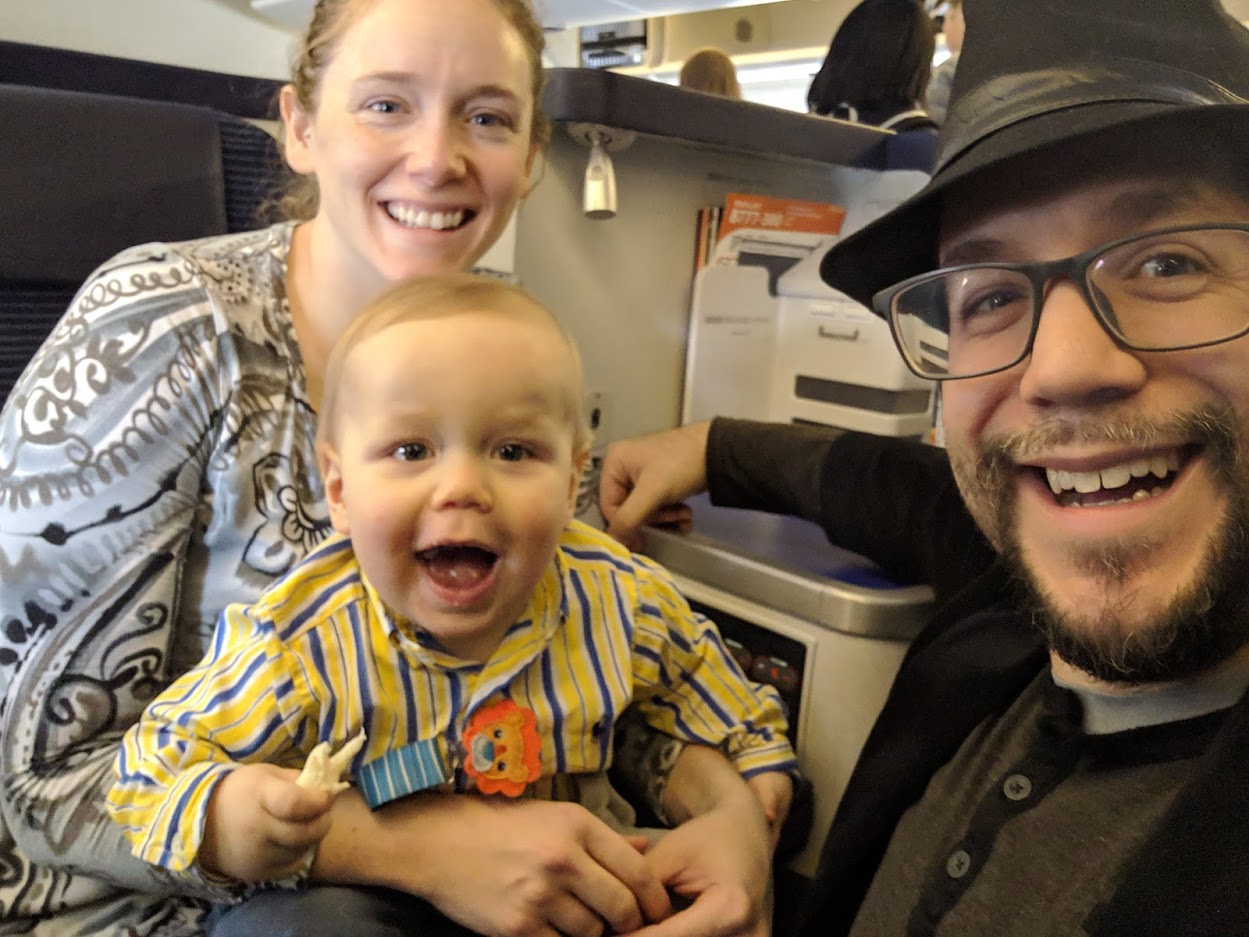
Flight deals for family travel
Award tickets are certainly a way to get more family travel for less and a good place to start in figuring out the best deals in award travel is by reading our Best ways to get to series. But there are quite a few techniques specific to family travel that can help you save on flights for a family.
Lap infant friendly airlines
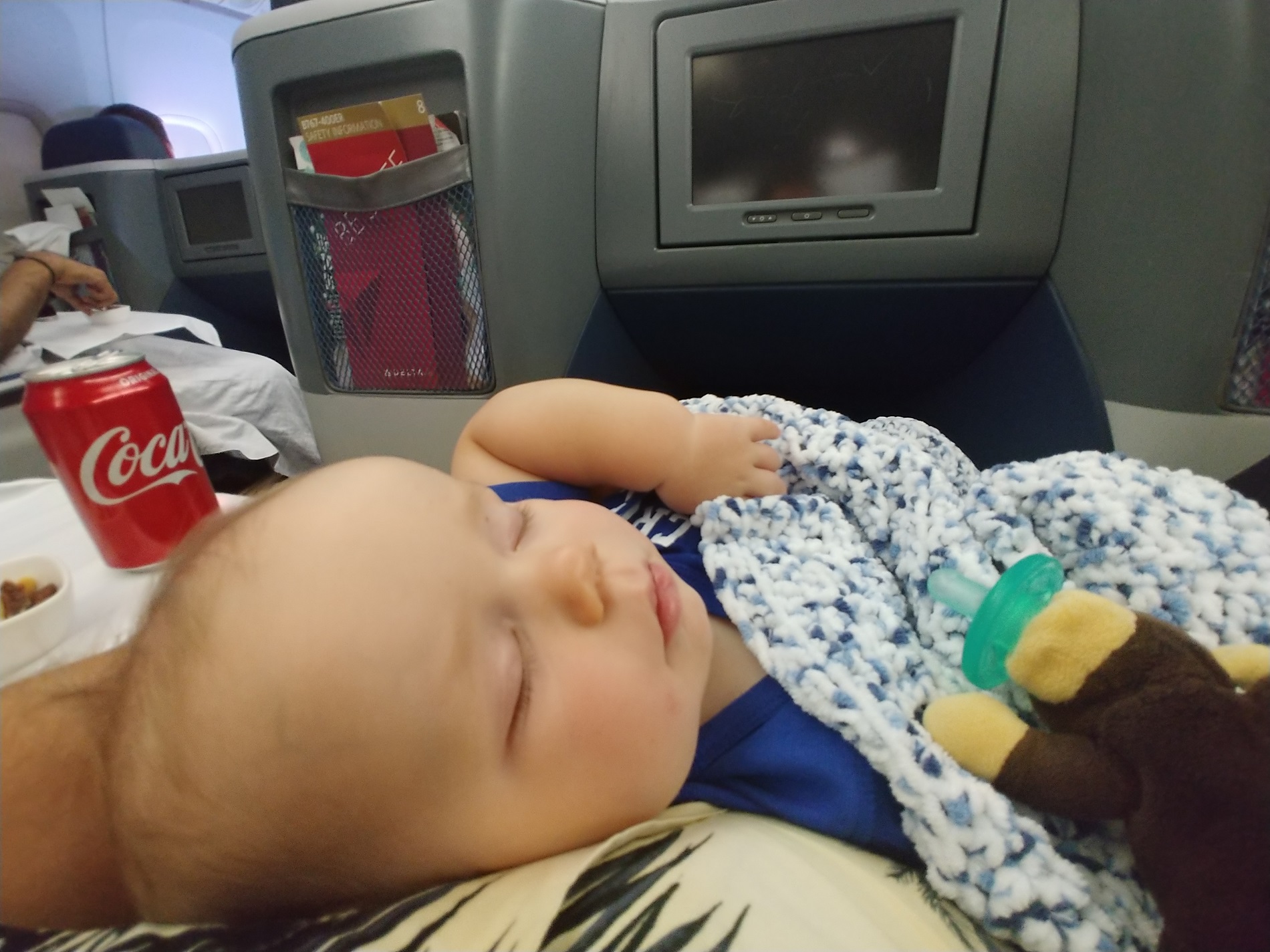
If you’re traveling with a lap infant, you’ll need to consider what it’s going to cost you. A lap infant is free within the United States, even if you’ve booked an award ticket through a partner program (while that partner program might want to charge you to add a lap infant to your reservation, based on my experience, you can show up at the airport and add a lap infant at the check-in counter for free even if you booked through a foreign partner program).
However, if you’re going to travel internationally, you’ll want to consider the best airline programs for lap infant travel before you book your ticket. Most frequent flyer programs charge 10% of the adult revenue fare for a lap infant. If you’re traveling on a one-way international business class ticket, a lap infant could easily cost you hundreds of dollars. If you’re traveling in international first class, a lap infant could cost you in excess of $1,000 one-way — for the honor of sitting for hours with an infant on your lap.
The good news is that some airline programs offer standout value for lap infant award tickets. Keep in mind that on international award tickets, you almost always need to book the lap infant through the program from which you bought your ticket(known as the “ticketing carrier”), not the operating carrier . In other words, if you book a Delta flight through Air France / KLM Flying Blue, you’ll pay Flying Blue’s lap infant price (10% of the adult revenue fare). If you book that same Delta flight through Virgin Atlantic, you’ll pay Virgin Atlantic’s lap infant price (2,500 miles in economy / 5,000 miles in business class). In rare instances, you may be able to book your lap infant ticket through the operating carrier even when you’ve ticketed through a different airline, but it’s not common.
Here are the best programs for booking lap infant travel:
- Air Canada Aeroplan (2,500 miles or $25 CAD one-way): This is the gold standard for lap infant awards: pay just 2,500 miles or $25 CAD one-way for a lap infant award ticket in any class of service. Given that Air Canada also has more partner airlines than any other program, you’ll have plenty of options to get your family where they need to be for the best deal in lap infant travel.
- Virgin Atlantic Flying Club (2,500 mi economy / 5,000 mi business / 7,000 mi first class). This pricing can be downright amazing if you’re able to add a lap infant to something like an ANA first class award for just 7,000 miles. Just keep in mind that agents won’t always quote you the right price, so you may need to call back if you don’t get an accurate price on the first call.
- ANA Mileage Club (10% of either the adult revenue or award fare). ANA always used to charge 10% of the adult revenue fare, but at some point they started allowing the option to pay 10% of the adult mileage fare. That can be a fantastic deal because ANA’s award chart has some great sweet spots for adult revenue fares.
- British Airways Executive Club (10% of the adult mileage fare; free seat for those who turn 2): British Airways is another program that charges 10% of the adult mileage fare for a lap infant award ticket. That’s certainly a good deal if booking via British Airways makes sense. But British Airways also has an interesting quirk that they share with Virgin Atlantic: lap infant ticketing for a child who turns 2 years old during your trip. If you book an itinerary where your child will turn 2 years old during the trip, most airlines require that you buy a seat for the child for the entire itinerary (i.e. you can’t book them as a lap infant). However, British Airways and Virgin Atlantic will allow you to book your child as a lap infant and they will give the child a free seat for segments after they turn 2 years old. In other words, if you booked a round trip flight on British Airways and your child is under 2 before the outbound but they turn 2 before the return, you will pay for them as though they are a lap infant but the child will get their own seat for the return flight. That can mean a business class seat one-way for the lap infant price.
Be flexible with destinations
I’ve mentioned before that one of the keys to booking award travel is being destination-flexible. As you add additional passengers, that only becomes more important. Getting multiple seats in a premium cabin can be a challenge. Being flexible with where you are willing to go can make a big difference in terms of finding options.
Instead of approaching your vacation in the traditional way — “I want to go to Hawaii during Thanksgiving break”, accept that you’ll more likely need to approach award travel as, “I want to go where I can find 4 available seats in business class during Thanksgiving break”. Instead of, “I want to go to Paris in the first week of August”, try, “I want to go to Europe during summer break” and accept looking at different gateways on either end of the trip rather than a narrow search between just two airports.
Accept that you can not change the school schedule, nor make award availability magically appear on the highest-demand dates and don’t focus on those things you can not change but rather be flexible in the ways that you can (like where you go, which gateway you use to leave, etc).
See Business class for 4 or more: finding multiple seats for family award travel for tips about how flexibility can open possibilities.
Consider splitting up ticket purchases
In the post Business class for 4 or more: finding multiple seats for family award travel, one of the things I mention is that I typically start out by searching for one seat. Along those lines, you might consider splitting your purchase.
Airlines usually price tickets in buckets. That is to say if there are a hundred seats for sale on a plane, they may (for example) price the first 10 seats at $100 each. Then, after those first 10 seats sell, they price the next 15 seats at $150 and the next 25 seats after that at $250, and so on, with the prices inevitably rising as the plane fills up. That’s a simplification, but it’s the general idea. Unfortunately, fare bucketing can really work against you as a family traveler.
Let’s say that there are 2 seats left for sale in the cheapest fare bucket, but you want to buy 3 tickets. When you search for 3 passengers, most airlines will price your reservation based on the lowest fare bucket with enough seats for all of your passengers. In the example above, let’s imagine that there are only 2 seats left in the $150 fare bucket. If you search for 3 passengers, in most cases the airline will sell you 3 seats at $250 each (the lowest fare bucket with 3 available seats) for a total of $750. However, if you bought your tickets separately, you could potentially buy two at $150 each plus one at $250 and spend a total of $550 — saving $200 by splitting up the purchase.
As a real-world example of this happening with award tickets, I recently helped a group of three family members book a trip. Tickets for their outbound would have been ~$400 per passenger on the outbound. In this case, that price was the same whether I searched for two passengers or three passengers, so there were clearly enough seats in this fare bucket for all 3 people.
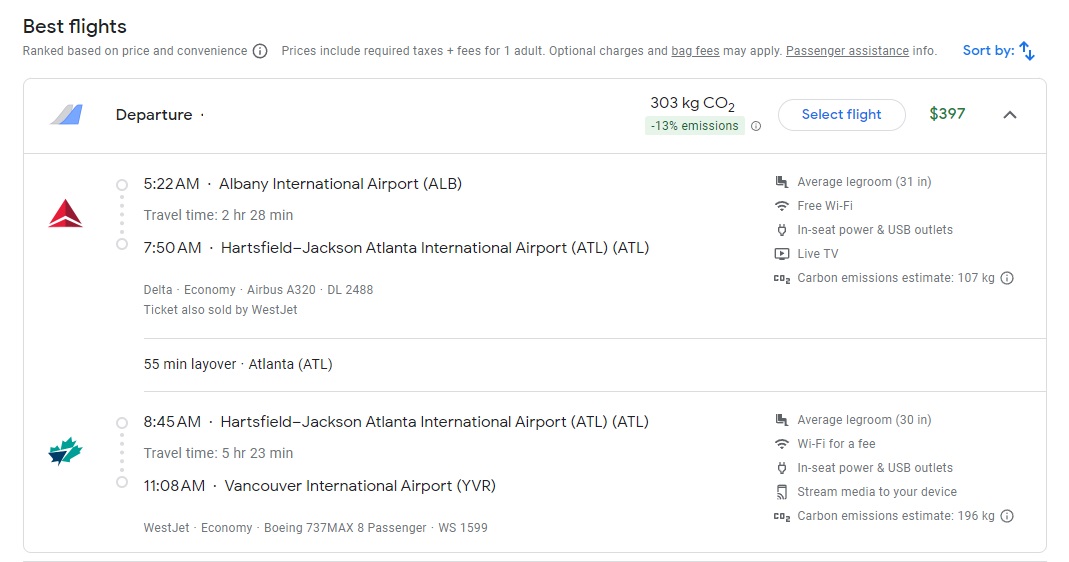
However, award tickets were a different story.
When I searched for awards for three passengers, the award prices were exorbitant. For instance, Delta wanted 132,500 miles per passenger (in economy class!) — but I realized that when I searched for 3 passengers, the itinerary above didn’t show up as an option at all. When I searched instead for two passengers, I found that there were two award seats available on that same itinerary above for 15K SkyMiles each. That made for a total of 30,000 miles and $11.20 rather than almost $800 for those two seats.

We immediately booked a cash ticket for the third passenger for $397. At the end of the day, paying about $408 and 30,000 miles for 3 seats ($397 for the third passenger plus $11.20 and 30,000 miles for the two award tickets) was a much better deal than paying almost $1,200 for the same seats.
In that case, there were only 2 award seats left on that itinerary, but I have also run into this functioning as explained with fare buckets above. For example, three award seats might price at 45K miles each, but two award seats are 15K each. In those cases, I’ll book two at 15K each and expect to pay 45K just for the third seat (for a total of 15K + 15K + 45K = 75K miles) rather than paying 45K x 3 = 135K miles.
There are some complications with this strategy. First of all, you often can’t easily book children separately from adults (if that’s possible to do, it will likely require a phone call). In my example above, if we had been booking that trip for 2 adults and 1 child, I would have booked the first two seats as 1 adult and 1 child and the additional separate revenue fare would have been 1 adult. In some cases, the price change could be drastic from one fare bucket to the next. I usually don’t worry much about that since many airline tickets can be cancelled for free within 24hrs of booking, so I could usually cancel the first couple of tickets in that scenario.
Perhaps more importantly, booking tickets separately means being under separate confirmation numbers / PNRs. That has some downsides. If one of the members of your party has elite status benefits or a credit card benefit like free checked bags that would apply for all members on his or her reservation, the people booked under a separate PNR will not receive those benefits. In the case of irregular operations, there is some risk of your family being reaccommodated differently if the passengers are booked separately. It is sometimes possible to call and get PNRs linked, but the bottom line is that this adds a layer of potential complexity.
Still, it can be worth it for the savings assuming that nothing goes wrong and/or you are prepared to handle the situation or advocate for the solution you want if things go sideways with your trip.
Flexible stop-over

While you may have a hard time (for example) finding award availability for a nonstop flight directly from the US to Australia, you may find it much easier to find a flight from the US to Japan or Hong Kong or elsewhere in Asia and then find a second flight from Asia to Australia. In some cases, you can book this type of trip as a stopover and take advantage of the chance to visit an extra destination and easier award availability. I often find that while awards to a destination like Australia can be impossible to find from the US, they can be much easier to find from Asia — so building in that stopover can make it possible to get there when it seems impossible. See How to piece together an impossible award for more on this.
The short story is that some programs allow a free stopover. Sometimes, that stopover can make the difference in terms of finding availability to your desired destination — and it can also make the travel experience go more smoothly when everyone can get a chance to adjust and sleep in a bed for a night or two on the way to a far-flung destination. Stopping over on the way can often give the kids time to adjust and get a full night’s sleep and/or run around and burn off some pent-up energy and that can be huge for everyone’s sanity.
Note the difference between a layover (a connection of less than 24 hours) and a stopover (a connection time of 24 hours or more). Most programs allow a layover of up to 24 hours on an international award ticket (and potentially several of them).
Programs that allow a stopover include:
- Alaska Airlines Mileage Plan: Book a free stopover on a one-way award. For example, fly from Los Angeles to Fiji, stop for a day or two, then continue to Australia on Fiji Airways or fly from Chicago to Tokyo, stopover, and then continue on Japan Airlines to your final destination in Asia for the same cost as flying straight through.
- Air Canada Aeroplan: Book a stopover on a one-way award for 5,000 additional miles (limit of 1 stopover in each direction).
- ANA Mileage Club: Book a free stopover on a round trip award.
Companion Tickets can help a family save on flights
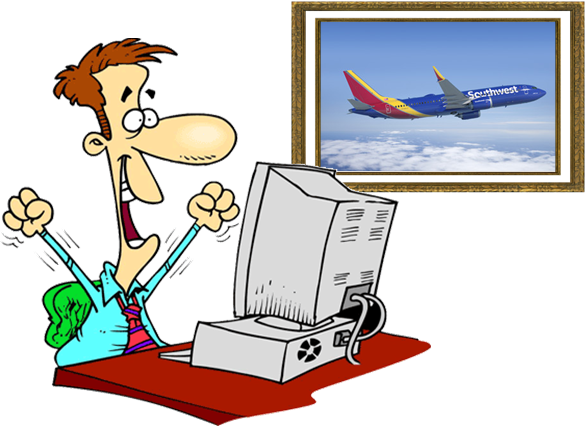
Companion tickets can reduce the cost of your travel by allowing a companion to fly for free. This can be useful for family travel — and it can scale. For example, if you have two parents and two kids, each adult could get some fort of companion ticket and book a ticket with one of the children joining as a companion.
Programs with notable companion ticket benefits:
- Southwest Companion Pass: Arguably the best deal in domestic travel, the Southwest Companion Pass allows the pass holder to bring a companion for free an unlimited number of times during the validity of the pass. If you play your (credit) cards right, that can mean nearly two full years of a companion traveling for free — whether the pass holder books their ticket with miles or money (the companion only pays taxes, currently $5.60 one-way on domestic flights). For more on this valuable program, see our Southwest Companion Pass Complete Guide.
- Alaska Airlines Visa Signature Companion Fare: The Alaska Airlines Visa Signature card comes with an annual code good for a $99 + tax companion fare. While this companion fare can only be used once each year, it is notoriously flexible and with a little strategy it can turn into more than meets the eye. See more detail in this post: Alaska Airlines Companion Fare Complete Guide.
- Both the Platinum Delta SkyMiles credit card and the Delta Reserve Credit Card offer annual companion certificates. See our Delta Companion Certificates Quick Guide for more info.
- There are a number of other credit cards that offer paths to a companion fare of some sort. See our Guide to Companion Fares for more info.
Vacation Packages for flight savings
Many airlines sell vacation packages. While these are not always great deals, there are times when you can save a significant amount over the cost of airfare alone by booking airfare and a hotel or rental car — even if you don’t intend to actually use the hotel or rental car.
See Build your own business class fare sale with vacation packages for more info.
Don’t forget premium economy
Blogs often cover sweet spots with regard to either economy class or business class awards, but don’t forget about premium economy. On many airlines, the premium economy experience is improving to the point where international premium economy at least somewhat resembles domestic “first class”, which can make it a comfortable-enough option — and it is often easier to find multiple award seats.
Furthermore, it might actually be available for a better price than economy class.
For instance, I recently helped family members book the return segment for a trip. By default, the United website searches for economy class awards. Then, in the date search bar shown in the example image below, it displays the lowest price for an economy class award each day. As you can see, under the date Sun, 8/20, the lowest price for economy class was 37,500 miles per passenger. However, if you then look at the search results below the weekly calendar, you’ll see that Premium Economy was 30K per passenger.
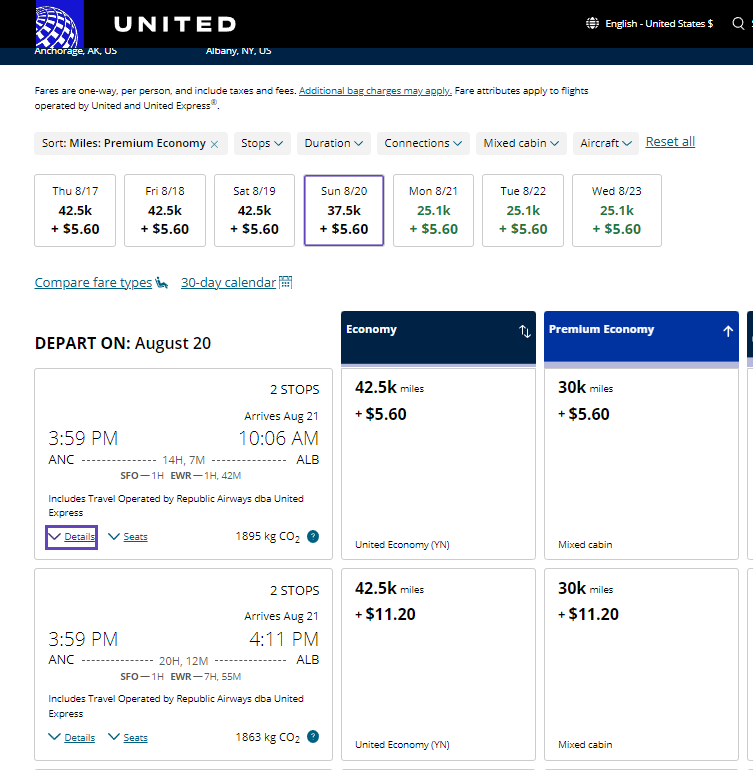
In that specific instance, the fact that it is a “mixed cabin” award stands out. That award was 3 segments and two of those segments were only available in regular economy class. However, the segment that really mattered was the overnight segment from San Francisco to Newark — and that segment was in United’s Premium Plus cabin. I recently got to fly in that cabin and it was quite nice.

Had I only looked at the numbers on the weekly calendar and not sorted the results by each cabin type on the search results page (sorting them by lowest price for both premium economy and then business to double-check prices), I may not have even known that was an option. That isn’t necessarily an isolated incident. I have also seen instances with other airlines where premium economy awards cost fewer miles than economy class awards.
Again, premium economy doesn’t get tons of blog coverage. That is at least in part because many airline programs do not have an award chart for premium economy, so you may only be able to find these awards by searching directly through the operating airline’s program (though, notably, some airlines do have premium economy award charts for partner flights). It’s worth keeping your eye out for those situations where it might make sense.
Lodging
Obviously using hotel points is a great way to save on the cost of lodging, whether you’re a solo traveler or a family traveler. However, there are several specific strategies worth a mention from a family travel perspective.
Do you have to pay extra to have kids in your hotel room? Do you need to book two rooms?
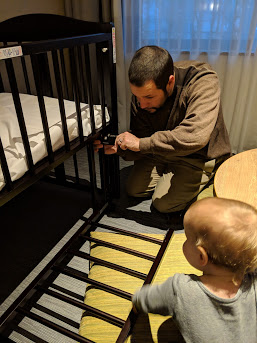
The question above doesn’t often come into play very when traveling domestically in the United States as most hotels charge the same amount whether you have 1, 2, 3, or 4 guests in the same room. However, internationally, it is not uncommon for hotels to charge more per person in the room or to have occupancy limits like 2 or 3 people in a room. This often begs the question: Do you actually have to pay more for young kids in your room or book multiple rooms for your family?
On the surface, the answers certainly may be “yes” to either or both of those questions. However, there are some complexities that lead to varied experience.
For instance, I have sometimes found that hotel website swill add an additional guest fee for children when I search for rooms to accommodate 2 adults and 2 children. I once had a conversation with a hotel front desk clerk who told me that the hotel didn’t see any part of that fee and didn’t charge it to people who walked up — essentially, he said it was just an extra fee that chain pocketed. I don’t know whether he was right or wrong, but since that time I have often booked a room for two adults and then reached out to the hotel separately and directly to say that we will have two kids in the room also in order to find out if there will be an additional charge.
There are certainly instances where you won’t be able to accommodate your entire family in one room and/or where there will be extra charges if that is an option. For instance, room occupancy limits are often relatively strictly enforced in both Europe and Asia — so if a room says that it can accommodate up to 3 guests, many hotels in those regions will not allow four guests to stay in that room. This is sometimes due to local fire codes, etc. In those cases, you may indeed be stuck booking two rooms. If you are booking an all-inclusive property, there will almost surely be an additional fee for extra guests even if you are allowed to have those guests in your room.
The moral of the story here is that it makes sense to do some research: does the room you are booking accommodate the number of people you need it to accommodate? If it does but the hotel website is adding an additional fee for additional guests, you may want to try booking for one or two guests and then reach out to the hotel to inquire about the kids. On the flip side, if you find that the maximum occupancy doesn’t match the size of your group, you may just need multiple rooms or to inquire about the cost to upgrade to a room type that will accommodate your family. In some cases, you might be surprised: I have sometimes been upgraded for free to a room type that would accommodate the whole family. The squeaky wheel gets the grease — just recognize that you can’t always expect miracles in high-demand areas during peak season.
Vacasa Vacation Rentals via Wyndham
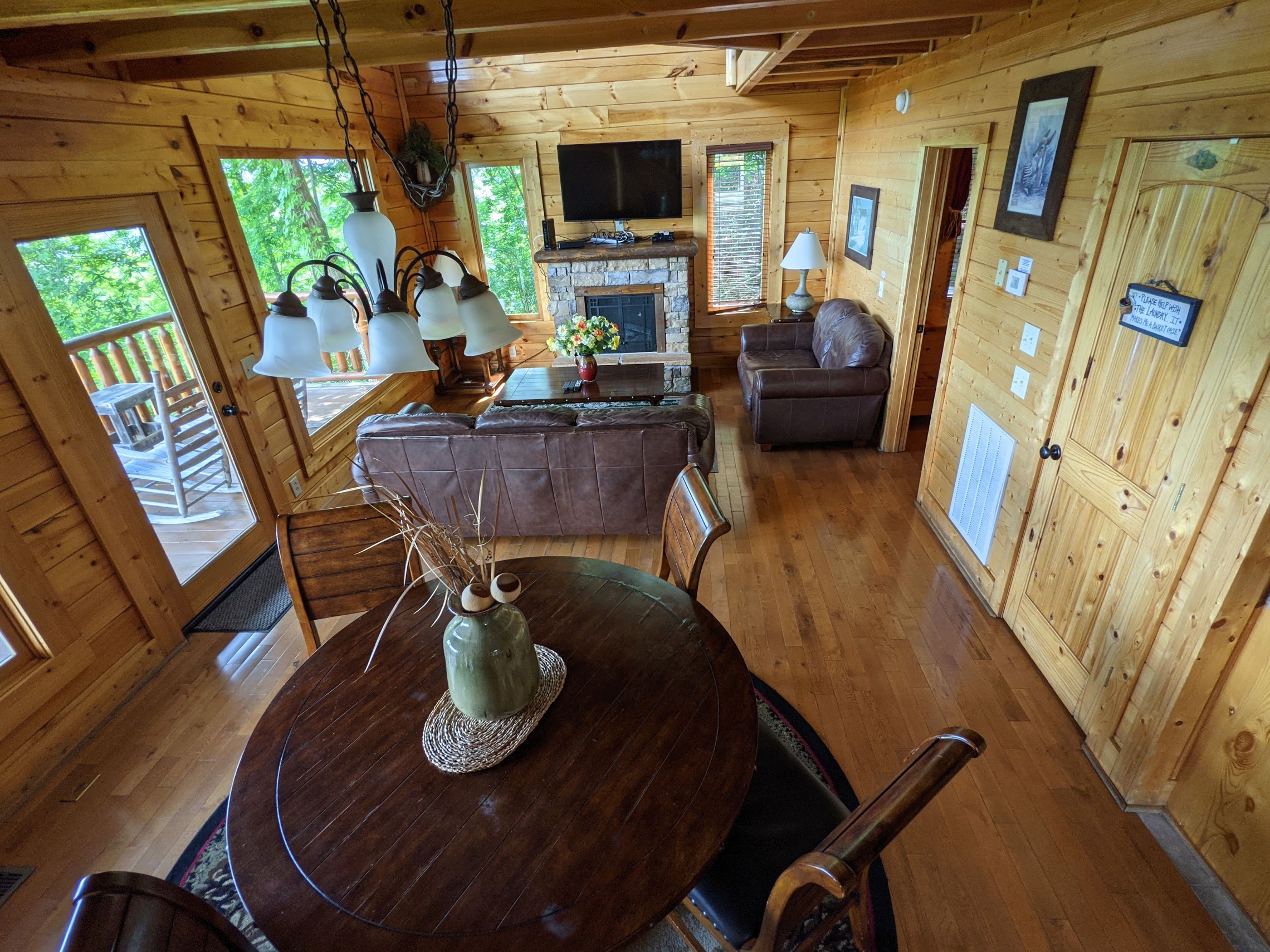
Family travelers can likely imagine the many benefits of booking a vacation rental: extra space, kitchen facilities, access to do laundry (in some cases), etc.
Wyndham Rewards has a partnership with Vacasa vacation rentals that allows for reserving Vacasa properties for 15,000 points per bedroom per night (up to an undisclosed maximum price which is believed to be around $350 per bedroom per night before cleaning fees). This can make for some fantastic deals because some Vacasa properties are set up to easily accommodate a family despite having only one actual bedroom. See for example the multi-level cabin I reserved in the Pigeon Forge, TN area: The Greenbrier Pigeon Forge Vacasa rental via Wyndham Rewards. Bottom line review.
Wyndham Rewards is a 1:1 Capital One and Citi transfer partner and they also have several credit cards. The Wyndham Business Earner Visa earns 8x at gas stations, which could certainly be a way to rack up points for stays.
Vacasa rentals must be booked over the phone. In most cases, there is no fee beyond the 15,000 points per night (i.e. no taxes or cleaning fees). More info can be found in this post: Vacasa: Great value is real!.
Airbnb
Much more widely known than Vacasa is vacation rental booking giant Airbnb. While there is no hotel partnership like the Vacasa/Wyndham tie-in, you can at least earn miles on your stay.
Both British Airways Executive Club and Delta SkyMiles offer links to book Airbnb and earn airline miles (e.g. 3 miles per dollar spent). While not a huge rebate, it beats not earning miles on your booking.
One annoying thing about searching for Airbnbs is seeing prices that don’t reflect the true cost since Airbnb notoriously adds cleaning and other fees and taxes later in the process which can significantly affect the total price. Thankfully, there is a way to get Airbnb to show the full price of a stay in search results. Thanks, Australia. See this post for more detail: How to see the full cost of Airbnb bookings on the search results page.
Hyatt Suites can be booked with points
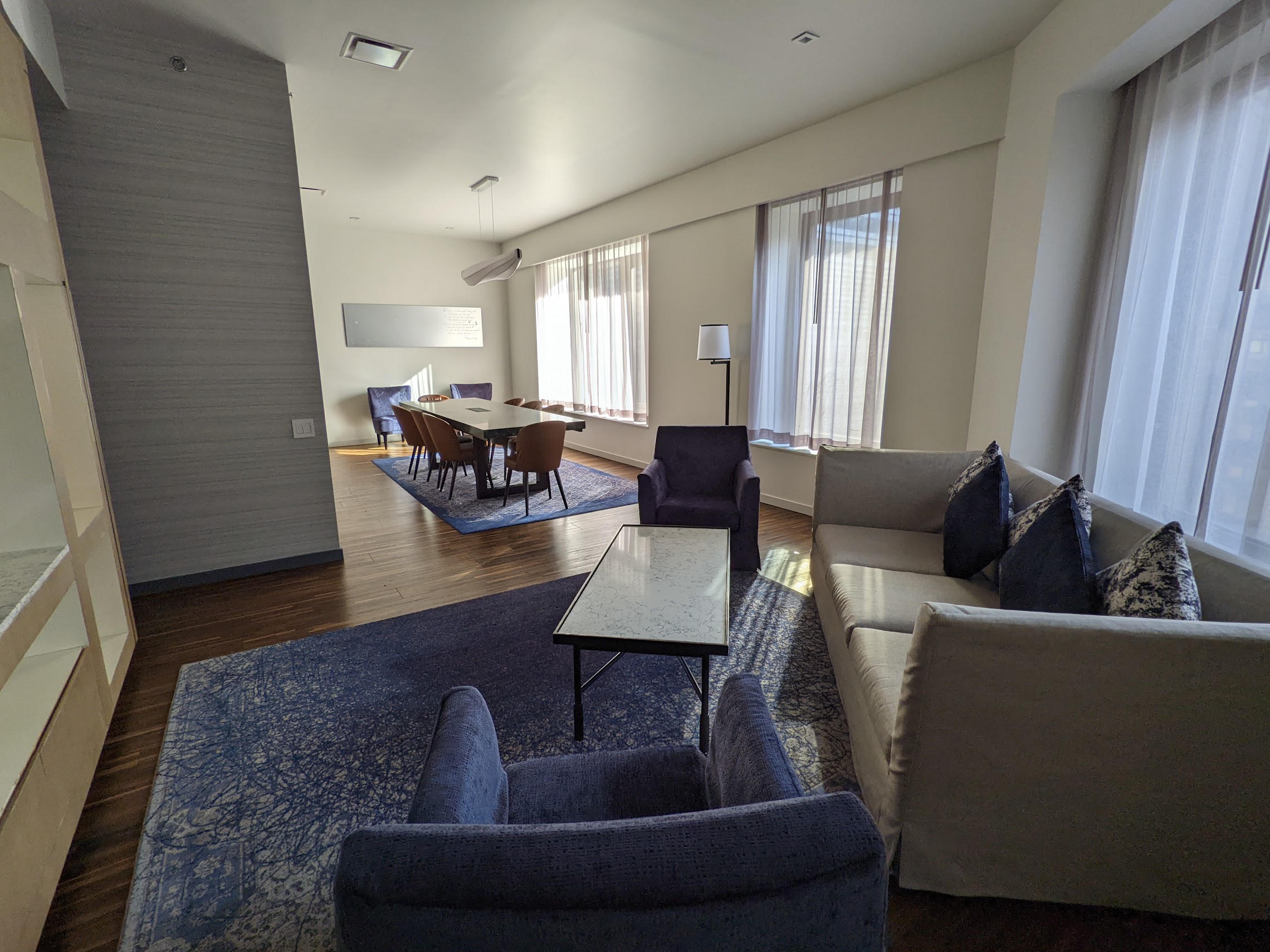
There is no doubt that I did not fully understand or appreciate the value of a hotel suite until I had children. Without a suite, everyone is stuck taking a nap at nap time and/or going to sleep for the night at 7:30pm. Having a bedroom door that can shut can mean lights out for the kids without the parents also needing to go to sleep before dark.
When it comes to booking suites, Hyatt is my go-to program. That’s because not only does Hyatt offer a milestone benefit that makes it possible to lock in a suite at the time of booking, but also because Hyatt is the only hotel program to have an award chart for suites, making it very easy to lock in a suite at the time of booking for a reasonable number of points.
If you stay a lot of nights at Hyatt, you can earn 2 suite upgrades at 50 nights stayed in a calendar year and another 2 suite upgrades at 60 nights. Those suite upgrade awards can be used to confirm a suite at the time of booking (or any time you wish before your stay) for a stay of up to 7 nights.
But even if you haven’t yet spent a single night at one of their hotels, Hyatt offers the chance to book standard or even premium suites using points or a combination of points and money in several different ways. Which way is best will depend on some variables. This post has more information on the many ways to book Hyatt Premium Suite awards and the same general concepts also apply to standard suite awards (but those will require even fewer points!).
Keep in mind that you can transfer 1:1 to Hyatt from Chase Ultimate Rewards and Bilt Rewards.
All-suites properties are a family travel goldmine
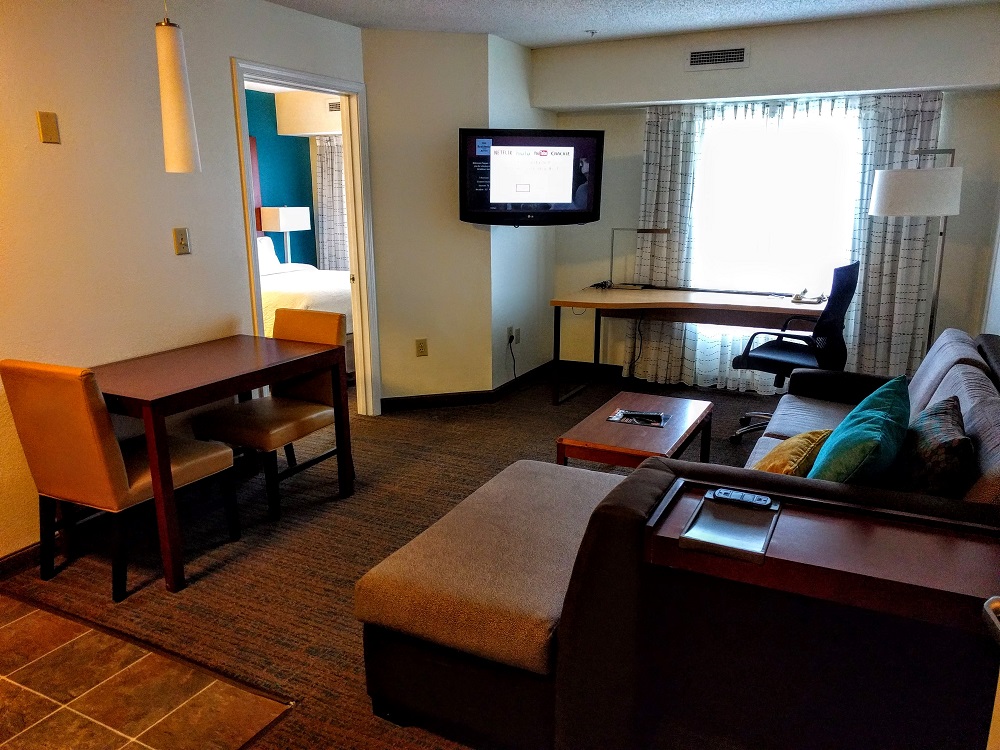
It’s worth a mention that the reference at the top of the post to Embassy suites is of course because numerous long-term-stay all-suites brands — like Residence Inn, Embassy Suites, TownePlace Suites, Candlewood Suites — can be awesome for family travelers. Before kids, I could probably count the number of times I had stayed at a Residence Inn on one hand; these days it is our go-to brand.
Keep in mind that many “suites” properties primarily have “studio” suites which don’t actually feature a bedroom with a door. They can still be quite spacious and a good option for a family with older children. But also keep in mind that it’s worth checking the available room types using awards because you can sometimes book a suite as a standard room. For example, I sometimes find I have a choice between a “studio” and a “1 bedroom suite” when booking a standard room award at Residence Inn properties. I have frequently used free night certificates to book a suite at a Residence Inn and been thrilled to do so given the convenience when traveling with a family.
All-inclusive properties for an easy getaway with young kids
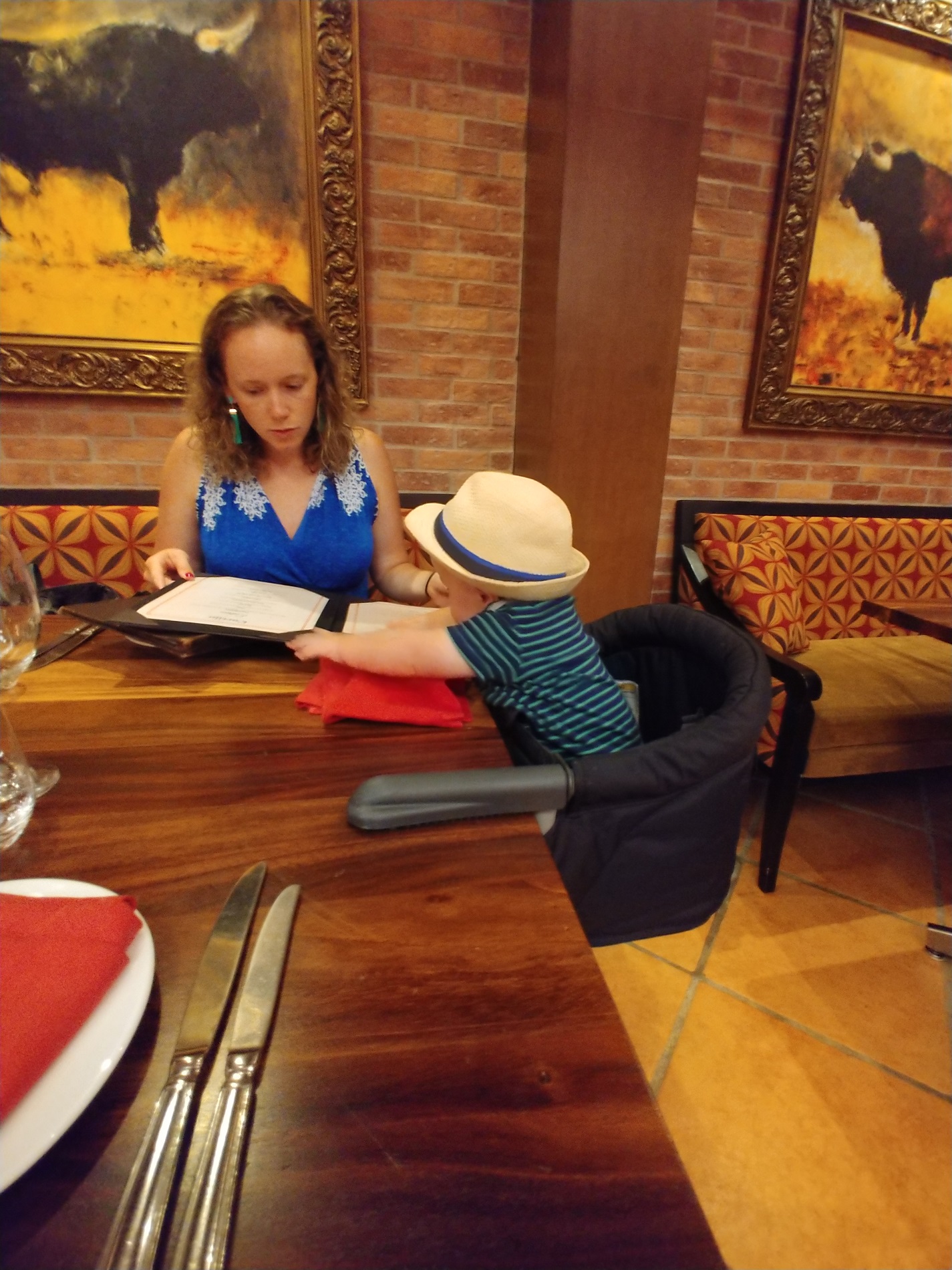
Before kids, my wife and I were never particularly interested in an all-inclusive resort. We aren’t big drinkers and before kids, we generally didn’t spend a lot of time at our hotel (we usually preferred to be out exploring rather than relaxing at a resort). However, we went to an all-inclusive when our first son was about 6 months old and I quickly understood why such properties can be so popular for family travelers.
Being able to abandon a restaurant meal if you suddenly have a cranky baby and having 24/7 access to food and drinks without additional cost can make a vacation far more relaxing. Furthermore, many all-inclusive properties feature a kids club with staff that lead them in activities and give parents a break. Kids clubs are not exclusive to all-inclusive properties, but you’ll often find one at an all-inclusive resort.
Choice Privileges for suites (sometimes)
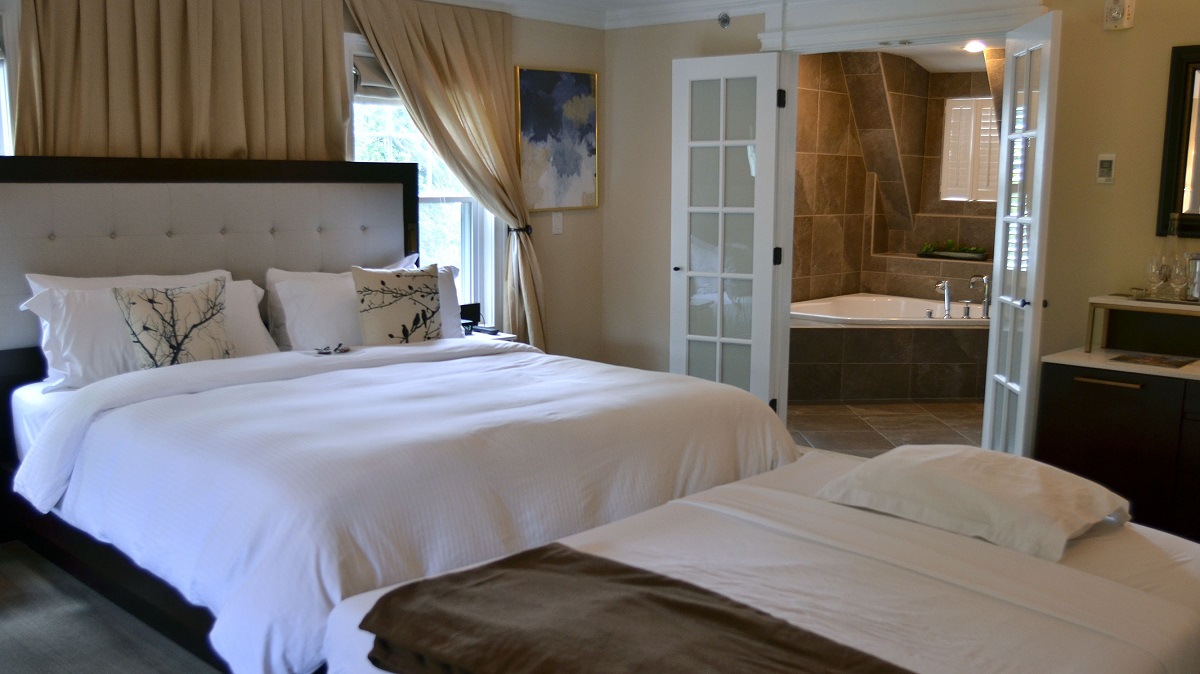
One often-forgotten award program that it’s worth keeping front of mind for family travelers is Choice Privileges. Choice is the loyalty program of chains like Clarion, Comfort Inn, Cambria Suites, etc. Most of the brands under the Choice portfolio don’t scream luxury, but Choice has an interesting program quirk: At many (though definitely not all) Choice properties, you can book a suite for the same number of points as a standard room.
This really varies by property, but some properties make all or many room types available using points and when they do, the same price applies to any room type. I took advantage of this for a two-bedroom suite in Napa Valley a couple of years ago and Greg has written about the penthouse suite at a lovely-looking property in Princeton.
Choice won’t always be the program of, ahem, choice, for family travelers, but there are times when it can work out great. As a reminder, you can transfer 1:1 to Choice Privileges from Amex Membership Rewards or Capital One miles. Better yet, Citi ThankYou points transfer from 1 Citi point to 2 Choice Privileges points.
Rental Cars
Rental cars have become increasingly expensive over the past several years. However, I often leverage rental car elite status (which I get from credit cards) to save significantly on family travel rental cars.
National Executive Aisle: Pay for a mid-size car, get a minivan/SUV
National rental car allows those with Executive status, which you can get from the American Express Platinum Card® or Chase Sapphire Reserve or Ritz-Carlton cards, to book and pay for a mid-size vehicle and then choose whichever vehicle they like from the “Executive” aisle upon arrival at the airport (at most locations).
I frequently take advantage of this status perk to reserve a mid-size vehicle counting on choosing something from the Executive area that more easily accommodates my family. At most airports, the Executive Aisle has at the very least large sedans and small SUVs and I very frequently find even larger vehicles. I often count on finding a minivan in the Executive Area, which has almost always worked out for me and has saved me boatloads of cash over paying the fee to reserve a minivan. When I really need that van, I have sometimes reserved a van at another rental car company with a reservation that features free cancellation but also reserved a mid-size vehicle via National (when that costs significantly less). Inevitably, I end up finding something on the Executive Aisle that meets my needs and I cancel the competitor reservation.
Note that some small airports do not have an Executive section. I always find it helpful to check out this Flyertalk thread to see what kind of vehicles have been recently reported at the airport I’ll be visiting (click “show more” on the original post for the long list of airport codes).
National free days for larger car class and/or one-way rentals
Most years, National Rental Car offers a months-long promotion called “One, Two, Free” whereby you can earn a free day after every 2 qualifying rentals (otherwise, you earn a free day for every 5-7 rentals depending on your elite status). Those free days can be a great value for any traveler, but they can be particularly valuable for family travelers for several reasons.
Those free days can be used for any car class (at least that is true with Executive Elite status, I’m not sure whether the same is true for members without status). I have used a National Free Day to reserve a minivan or large SUV, locking in the (more expensive) vehicle type I need while maintaining the chance to check the Executive aisle for other options.
I also find National free days particularly useful for one-way rentals. Earlier in the post, we mentioned that you sometimes need to be flexible about which airport(s) from which you depart or to which you arrive. I have often used a free day to reserve a one-way rental to fly out of an alternate airport. The advantage here is that since National bakes its one-way fees into the daily cost of the rental (rather than adding a one-way fee), you’ll be able to use your “free” day to defray the cost of a one-way rental (you’ll still need to pay some airport taxes/fees for your free day in many cases).
Company booking portal / corporate code for larger vehicles
Worth a quick mention is that many companies have rental car arrangements that allow for a standard price regardless of car class. You should check your company’s corporate codes or booking system to see whether they have a rate code that can be used for leisure travel because those corporate codes can sometimes save you a ton of money over publicly-available pricing. In many cases, you’ll find that SUVs and minivans are the same price as standard-sized vehicles when using your company’s corporate code.
Consider bringing your own car seat / booster seat
Renting car seats can get expensive quickly, easily adding $10-$25 per day per seat. While that may not be a big deal for a one or two day rental with one child, it means that the cost of renting two seats for a week could easily cover the cost of a brand new seat or two.
While I brought a full-sized car seat from home for approximately the first year of our travels with our first son, I found it quite cumbersome. If you do bring a car seat from home, I recommend getting a car seat bag — both because it will protect the seat (we lost both cup holders on our first car seat because it wasn’t in a bag) and because it gives you an extra place to stuff diapers / clothes / etc (it is usually free to check a car seat and we’ve never had a check-in agent hassle us over extra items in that bag).
Our older son now uses a portable inflatable booster seat that we bought and bring with us. I’m not yet sure that I love the exact one that we have, so I may experiment with another one or two to find the right one for us, but bringing one from home can certainly save you money and frustration (I can’t tell you how many times the car rental company hasn’t had the right size seat or booster). Domestically, I have also considered going to the store locally to buy a car seat or two (it can be cheaper to buy and donate than rent!), but that isn’t terribly convenient.
However you choose to do it, bringing something with you ensures that you get the right-size product for your child and it can save you a bundle.
Airport lounge access
Airport lounges can make the family travel experience much easier and far less expensive. Kids get hungry or thirsty? Need a moment away from the chaos of the terminal? An airport lounge can certainly help. There are several hacks to getting lounge access for a family.
American Airlines Executive card for Admirals Club access
The Citi American Airlines Executive card offers American Airlines Admirals Club access to the primary cardholder and up to 10 authorized users. While the annual fee is steep at $450, that can be worth it if you have multiple family members who need access to Admirals Club lounge lounges. Note though that Citi has surveyed making changes to this benefit, so we may see this become less generous at some point in the future.
Priority Pass for each member of your family
Quite a few credit cards come with Priority Pass, but the two best cards to consider for family travelers are the Chase Ritz-Carlton Visa Infinite and the Capital One Venture X credit card.
The Ritz card is no longer available to new applicants, but it is possible to product change another Chase Marriott consumer card to the Ritz card provided that your Marriott account has been open for at least a year. What makes the Ritz card great is that authorized user cards are free and each authorized user gets his or her own Priority Pass. Furthermore, the Ritz Priority Pass features unlimited guests — so you can theoretically get your entire family into the lounge with one Priority Pass from the Ritz card (though YMMV as to how many guests an individual lounge will allow). The Ritz-Carlton’s Priority Pass includes restaurant access, so you’ll be able to get a $28 credit per person at Priority pass restaurants, which can represent a great value for family travelers.
The Capital One Venture X card can be another great choice because of the fact that authorized users are free and each one gets his or her own Priority Pass. Unfortunately, Capital One axed access to restaurants and other non-lounge experiences via their Priority Pass membership on 1/1/23. Still, if you only visit Priority Pass lounges and/or the Ritz card isn’t a fit for you, the Venture X can work out very well for a family. It’s worth mentioning that Venture X cardholders also get unlimited access to Plaza Premium lounges, which tend to be much nicer than standard Priority Pass lounges, and Capital One lounges. Early reports on the Capital One lounge in Dallas indicate that it is fantastic and competitive with Amex’s Centurion Lounge offering, so this could be a great benefit if you are based at one of the few airports slated to get a Capital One lounge.
Stuff: What gear do you need?
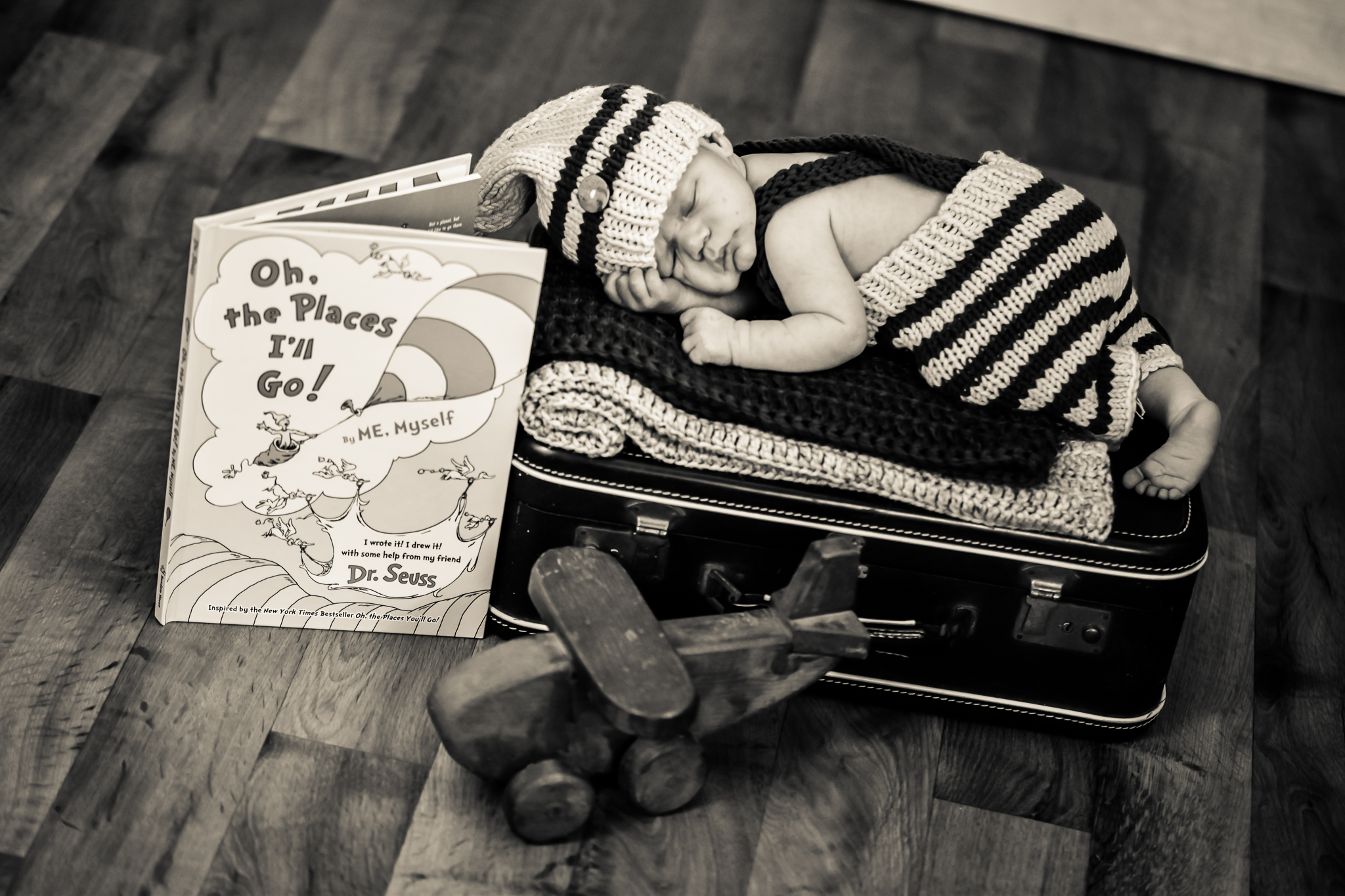
New parents (both friends and blog readers) often ask me about the must-have items for traveling with young kids. Every child and family is different; our own kids have had very different preferences when it comes to what things would keep them entertained or comforted. However, here are a few items that we have found were really helpful (I am including our Amazon affiliate links below, but none of these are sponsored by the sellers or manufacturers — these are just items I have used or think are useful):
- A very compact stroller. We use the gb pockit strollers (this is the first one we got, though I like the “all-terrain” version better). There are lots of other brands making similar stuff. We have a studier stroller for use at home; our gb pockit strollers don’t feel particularly sturdy and they aren’t made for off-roading, but the compact nature means that we never have a problem fitting them in a rental car or Uber or under the table at a restaurant or in an overhead compartment. We have occasionally had an airline tell us that the strollers need to be in a bag to go in an overhead compartment, so I bought backpacks in which they fit and those have been useful also.
- A high chair that clips to the table. We had this one (we actually had two of that model thanks to a friend handing one down to us), but there are plenty of other more reasonably-priced models on the market these days (and we paid less for ours a few years ago). This is so convenient: not all restaurants have high chairs and when they do they aren’t always in good shape (or maybe they don’t have enough of them). Furthermore, neither of our kids liked sitting in a traditional high chair and having the child right at the table was more convenient for us. I’ll admit being a bit nervous as to whether this type of chair would be safe — I often put a chair beneath it when we first started out, but ours held up quite well until we no longer needed them.
- Child Aviation Restraint System (CARES harness). This device is meant to make flying safer for young kids. There are a lot of knock-offs on the market — I recommend paying the extra to get the real deal directly from the company.
- Silicone bibs. I’m not going to link to any specific product here because there are so many on the market. From a convenience standpoint, silicone bibs saved us so much time and hassle because they are easy to wash out in a bathroom or hotel room sink and they dry much faster and more easily than cloth (you could just dry with a towel if need be). We used plenty of cloth bibs at home also, but when traveling we found the silicone variety to be indispensable.
- Window clings. This is something I never thought to do, but on a trip last year during a delay we encountered a family at the airport that had something like this and our sons played with their kid and LOVED them. These made for an easy hour of entertainment sticking them to the window in the airport and moving them around. I’ve read about people doing the same with a cruise ship window or balcony. I’m sure there are a lot of uses (and there are many different themed sets).
- Portable booster seat. I’m not yet sure that I’m ready to recommend the inflatable Bubble Bum that we’ve been using for our 5yr old, but I recommend doing some research and figuring out a portable booster seat solution when your child is big enough. Renting car seats and boosters can get expensive quickly and rental car companies frequently don’t have the right size available. While you can usually check car seats for free and bring your own seat from home, that can be cumbersome. If you do check your car seat, I highly recommend buying a car seat bag. That’s both because it helps protect the seat from damage in transit and because it gives you some extra space to stuff diapers and other essentials (and checking a car seat is usually free).
- Inflatable bed for road trips. Once my kids were big enough to no longer want/need a pack-and-play type portable crib for road trips or trips to visit family, we got something like this. While I wouldn’t fly with the extra bulk and weight of air mattresses, these have been great for visiting family so we didn’t have to worry about kids rolling out of a full-height bed and they get excited about sleeping in it (my parents first bought one without a specific design that my son called “the raft” and then we bought one that looks like a space ship).
- Something that brings the comfort of home with you. This last piece is vague, but we found it useful to have an item that would provide the comfort of home. It might be something like Sophie the Giraffe or a cookie monster stuffed animal. It doesn’t really matter what it is that you bring, but there will be times when the stress of travel or changing time zones overwhelms and having some favorite toy from home will be all you need to calm the situation down. We usually talked with our kids about what they wanted to bring on the trip with us and let them pick what it is that they wanted. That said, my tips here are to pick something small enough to easily bring and prioritize making sure that you don’t lose this. Along those same lines, if it’s possible, I recommend something that can easily be replaced while traveling so that you’re not running from Target to Walmart to other stores at midnight looking for that one hard-to-find specific item. Ask me how I know.
I’m sure there are lots of other great products on the market — these are just the things that come to mind that we have found very useful in our travels with our own kids.
Bottom line
There are many ways that the miles, points, and credit cards game can help to save money on family travel. This post isn’t a fully exhaustive list of the ways to save, but it provides a solid starting point and reference guide to many of the easy wins you can experience that will elevate your family travel without emptying your wallet.
What are your favorite family travel hacks? Let us know in the comments.


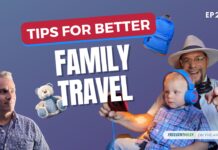
Just saying though, points and miles are generated from wallet spending too 😛
For most common folks like me, referral and huge manufacture spending are not a reliable income of points and miles.
Just finished a 2 week trip in the Dolomites with a 3 & 5 year old. Never could have done this trip without the points world. Absolutely stunning and family friendly.
A couples notes on gear:
We actually went the opposite route on stroller and brought our BOB. Was very helpful in busy airports and carting stuff around, then did gate check. Was also good on a handful of stroller friendly hiking trails.
Packing cubes is an absolute must.
Utilize car seat bags for easy free luggage and pair with small travel car seats.
We bought these inflatable footrest for the kids on the plane. Was great for the redeye as it turned their seats into a kids Polaris. We had the middle 4 seats.
Kids activities stash. Absolutely critical to have a packing cube of activities for the plane, restaurants, hotels, etc. As you mentioned the kids need items to engage themselves as you are carting them along.
And lastly bring patience, there will always be ups and downs when traveling with little ones 🙂
@Nick Reyes what did you change/add from when you originally posted it?
Did you miss the box at the top that says “What’s new?”. That lists what’s new.
yup. thats what happens when i try to read your articles on my phone.
You forgot about including cruising as an option for a family friendly vacation. Most of the lodging, transportation, and food is already taken care of!
I just got back from a “free” Norwegian Fjord cruise on the Carnival Pride (same ship you went on a few years ago) via the casino match offers. It was a great trip. Thanks again for that tip!
Just wanted to comment that the picture with you, Ms. Nick, and Baby Nick is adorable. Well done man! 🙂
I would heartily endorse the YoYo stroller by Babyzen. We’ve been all around Europe and Asia and the minute you say “It’s a YoYo”, the flight attendants relax and let you take it on the plane with no hassle.
That’s absolutely true. It’s also why I just say that mine is YoYo – cheaper solution!
Knowing nothing about strollers prior to having my kiddo, I trusted the Mrs. to make the call. When you have an only child, NOTHING is too expensive if it will make things easier. Or at least that’s what my wife tells me.
Another option for occasional travelers on the Priority Pass would be the Amex Hilton Surpass and Hilton Business, both of which get you 10 free visits a year (plus the other benefits like Hilton gold status) for $95, which is a steal.
[…] For the newbies: Elevate your family travel without emptying your wallet: using points, miles, and the right credit c…. […]
I always bought my babies a ticket and strapped then in their carseats for the flight. I never wanted to take a chance there would be turbulence causing injury. I’m sure it’s rare, but I couldn’t bring myself to take the chance. Besides, everyone was happier.
That’s definitely the safest choice and I won’t fault you for that! In our case, nobody would have been happier because neither of my boys was happy being in a car seat between age one and age two. There were several long road trips to visit family members where at least three out of the four humans in our car were in tears by the time we got there. Plane travel just wouldn’t have been an option if that was the only choice for us. (And I can certainly understand somebody who decides not to travel by airplane in that case).
For us, the space to get up and move around in business class, even just within our seat area, and the ability to lie down and sleep made all the difference in the world….and unfortunately you can’t strap a car seat into most international lie-flat seats. Like I said, your choice is clearly safer. I think the odds of us getting into a car accident one of the many times we’ve taken the kids on the road in the car is probably higher than the risk of severe turbulence, but obviously in the car the kids are in their car seats and as you said it would have been my responsibility if something went wrong in the plane. I obviously would never argue against strapping your kid in the car seat for the plane ride.
I misread the All-inclusive section as “we weren’t big drinkers before we had kids” before I reread it. Personally, I think both versions work.
vacasa is the best.
without it my family never would have been able to travel to HI as hotels would have been prohibitive even using miles/points.
In 2017 we took 4 kids to Europe for 5 weeks during Oct/Nov, i.e. in the middle of the school year. I had 2 different weeks I need to be in Germany with 2 weeks in between, plus we stayed one more week at the end. We told (not asked) the district/principal what we were planning and arranged with teachers for online lessons and materials ahead of time. Kids were K, 2nd, 4th, & 6th, so it was a bit easier since they were all in elementary school, but now after the COVID lessons and virtual school experience there may be some improved options.
In 2019 we flew AA to SYD on cash tickets. The under-12s were charged a child rate, making their tickets ~$115 cheaper than adults (lower fare and lower taxes).
Embassy Suites are usually our hotel of choice for sleeping 6 since it is easy to get 2 queens plus a sofa bed at every one we have ever tried. The included breakfast and evening snacks are obviously not gourmet, but it can save a lot when feeding 6 mouths, especially now that 3 of them are teenagers. Airbnbs are also common places to stay to get 3 or more bedrooms, but I want to try Vacasa soon.